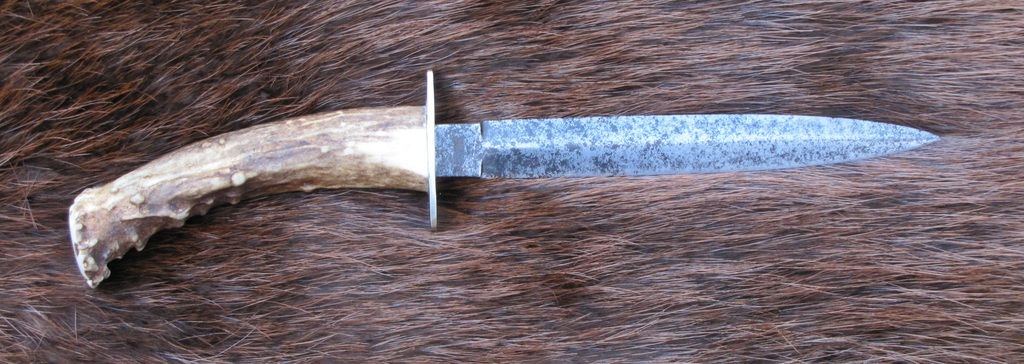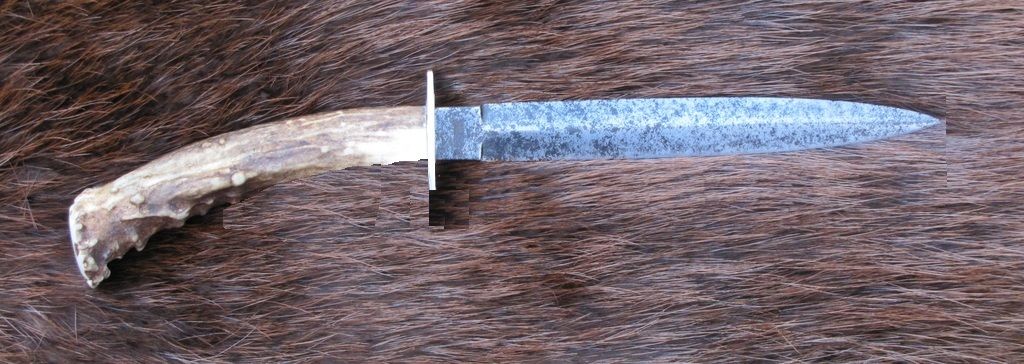MC One Shot
40 Cal
- Joined
- Dec 5, 2013
- Messages
- 265
- Reaction score
- 122
I found an old badly rusted doubled edged knife on the bottom of a box of stuff a friend gave me a couple of weeks ago. It appeared to have been wet for years as well rodents had chewed the handle almost off.
Having read a few recent posts about HC double edge knives of the 18th century my mind went in to gear. So this afternoon after a few hours of draw filing and crocus cloth and 000/0000 steel wool the rust started to come off.
After a bit it started to look like a forged knife where I stopped. I built a handle from some antler I had put it all together and this is what came out.
Blade is 11/16"x6" and over all length is 10 3/16".

Now that it is together I think that I could have tapered the top and bottom of the handle to closer match the width of the blade. I still have to get some brass pins to put in to complete the handle.
Now I am also thinking of some sort of silver or brass cap for the end of the handle.
Having read a few recent posts about HC double edge knives of the 18th century my mind went in to gear. So this afternoon after a few hours of draw filing and crocus cloth and 000/0000 steel wool the rust started to come off.
After a bit it started to look like a forged knife where I stopped. I built a handle from some antler I had put it all together and this is what came out.
Blade is 11/16"x6" and over all length is 10 3/16".

Now that it is together I think that I could have tapered the top and bottom of the handle to closer match the width of the blade. I still have to get some brass pins to put in to complete the handle.
Now I am also thinking of some sort of silver or brass cap for the end of the handle.







